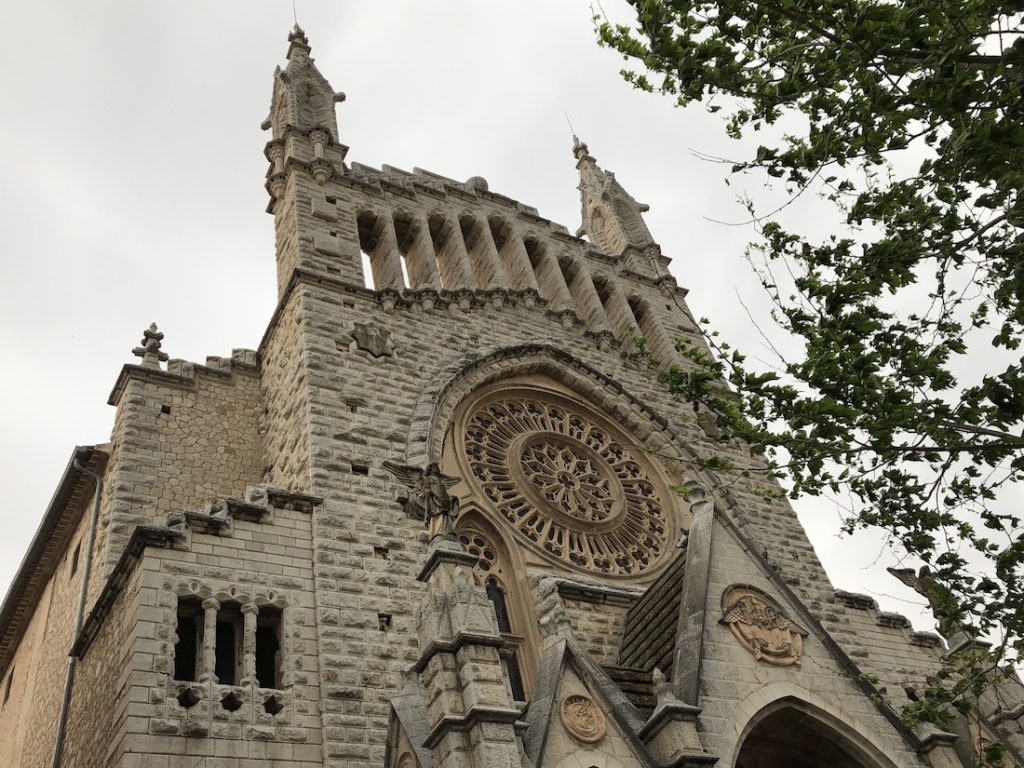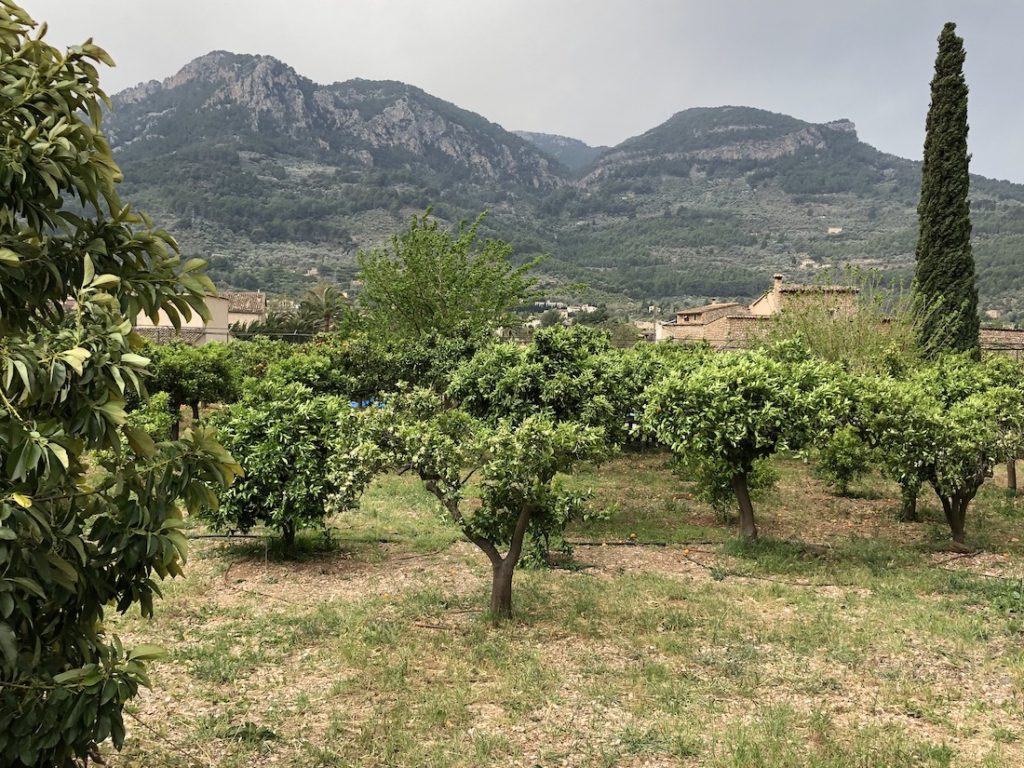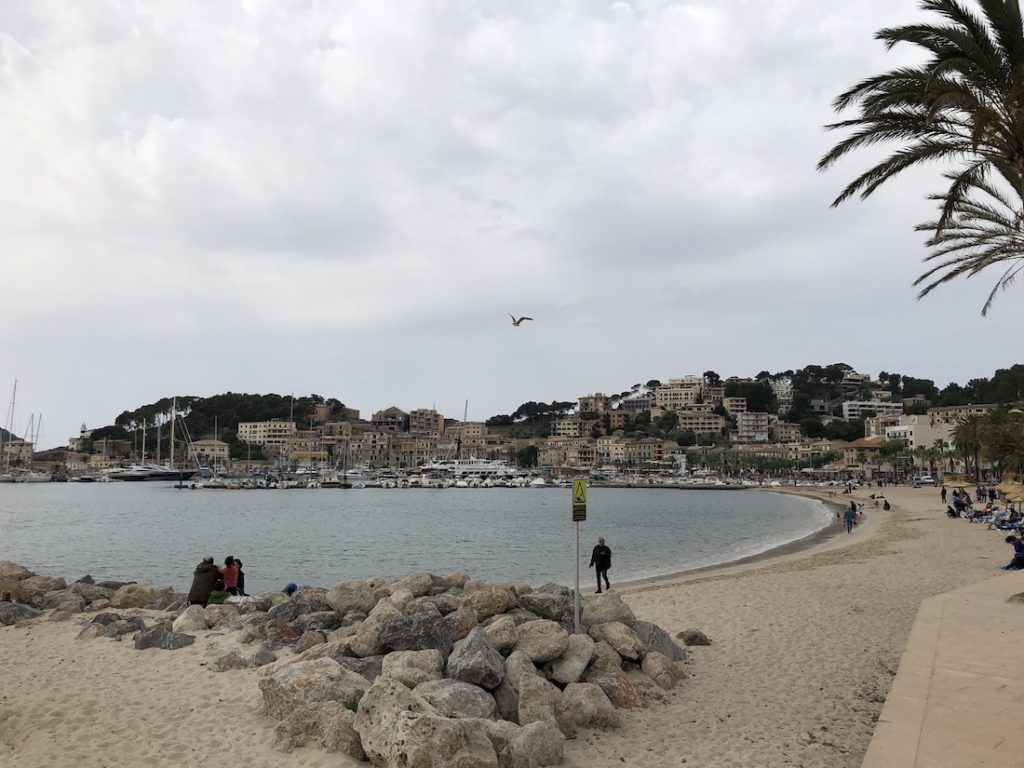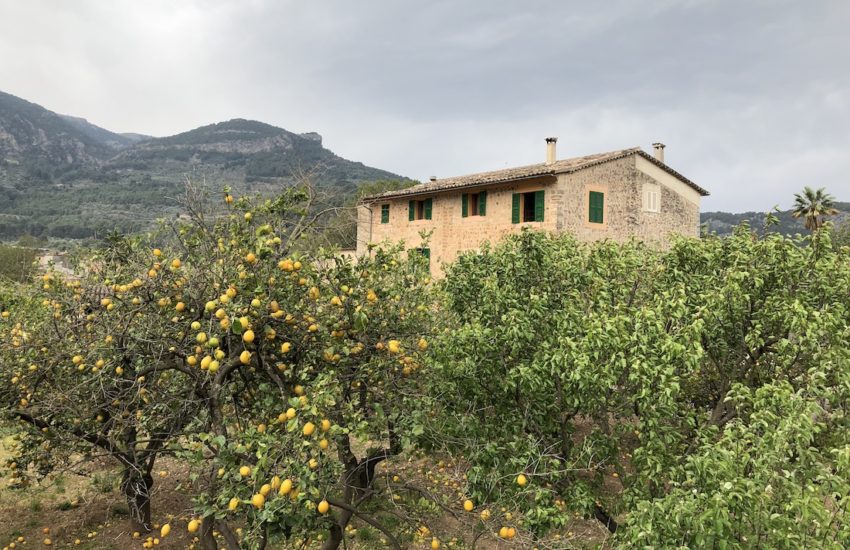It was mum who recommended taking the narrow gauge railway up to the prosperous country town of Sóller while we were staying in Mallorca. The journey itself promised to be as memorable as the destination…
But as was the way with our Easter weekend in the Balearic island’s capital Palma, we were to be disappointed – the train service was cancelled for the day because of an electrical fault. This dreary bit of news did not go down well for I was already cheesed off with a city whose principal attractions were closed for the holiday, and by the fact that the famous Mediterranean sunshine had given way to winds, a stubborn layer of grey cloud that refused to budge and cool temperatures. At Palma’s train station my black mood descended and it took a long time to shift…

With the weather predicted to worsen over the weekend, we opted to stick with Sóller and get the bus instead. The journey we took through the Sierra de Tramuntana mountains wasn’t as magical as the train’s route through the hills and tunnels, and neither was the modern coach much of a match for the historic wooden carriages, but the 211 gave us the opportunity to appreciate the magnificence of the range, which lies beyond the plains north of Palma. Over the centuries Mallorcans have managed to tame some of the lower slopes with terraces, creating space for olive and citrus groves.
Sóller lies beyond the mountains, in a broad valley that became famous decades ago for its excellent olives, oranges and lemons. While tourism is today’s main money-spinner locally, many orchards and groves still flourish. We got off the bus close to the main road and walked down to the Botanic Gardens but, perhaps predictably, they were closed so we walked into town and grabbed a coffee in the main square, the Plaça Constitució, which is a beautiful spot shaded by venerable plane trees and full of tourists. My black mood began to lift.
As we sat and watched the world go by, the historic wooden tram that links the town with nearby Port de Sóller on the coast trundled past laden with more tourists. The square is surrounded by venerable and interesting buildings, several of which were designed in the Catalan modernist style made famous by Gaudi and Barcelona. There’s the thrilling Banco de Sóller with its beautiful window ironwork and the frontage of St Bartomeu’s Church, the spires of which can be seen from far and wide in the valley.

A short walk away is the train station, which must be the only one of its kind in the world to have a free exhibition featuring the works of Miro and Picasso. Elsewhere in the town there’s a busy shopping district, an indoor market and characterful, narrow streets lined with elegant art nouveau mansions, town houses and cottages, which are many centuries old and sport the green-painted shutters that are a trademark of the island.
We opted to give the tram a miss and walk to Port de Sóller, taking a three- or four-mile route that followed country lanes and footpaths through the hills. Heading out of town on the Camí de sa Figuera, we were overwhelmed by the addictive, heady scent of orange blossom. In the orchards, citrus trees groaned under the weight of ripe oranges and lemons, but many more fruits lay rotting on the ground. Some of the olive trees were ancient and gnarled and for every run-down or abandoned farm building we passed there were elegantly restored examples, some of them holiday homes. The wind had dislodged heavy terracotta tiles from some of their roofs and they lay smashed on the road.

We climbed into the hills, stopping occasionally to appreciate the beauty and drama of the landscape, the mountains and the flora. Even the sun tried to break through the grey clouds. I felt rejuvenated and content with the world after our disappointing morning.
We descended through more olive groves, on a footpath of rubble, into Port de Soller. This reasonably wealthy looking seaside town lies in a picture postcard cove, guarded by lighthouses. Homes, hotels and villas cling to the hills above a sandy beach, the marina and the small tram station.

The seafront is lined with restaurants and we parked ourselves at one called Vint, which has delicious views of the bay and looked a cut above many of their seafront rivals. We tucked into some excellent tapas, including a tuna and tomato salad, croquettes and duck fritters, washed down with quality beer. After several hours of imbibing, we went for a quick walk along the front and caught the bus back to Palma.
Who needs a train anyway…

